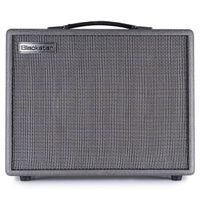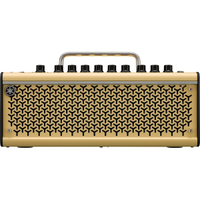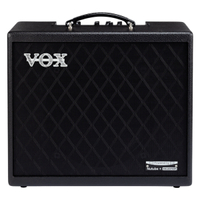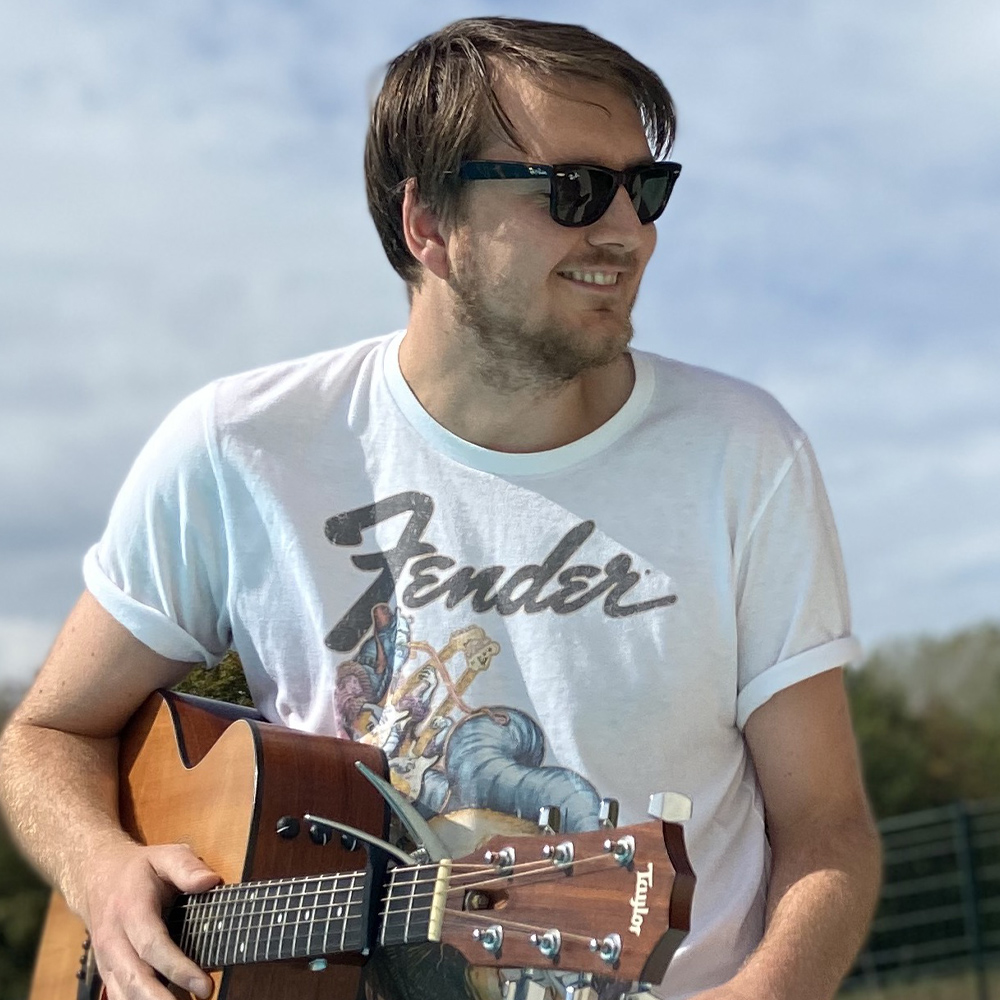Best modeling amps 2025: iconic amp tones at your fingertips
I break down the best modeling amps for guitar, covering a range of budgets, brands, and sizes
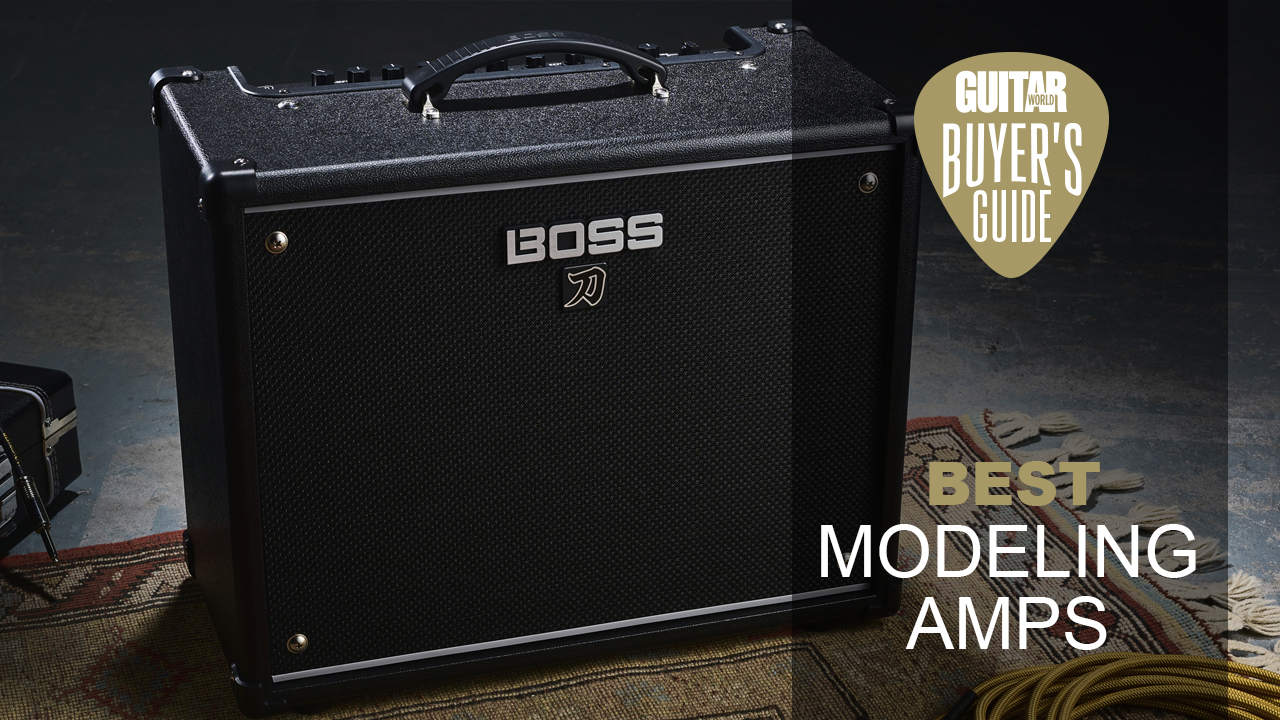
The popularity of modeling amps continues to rise. No longer are they solely the choice of beginner guitarists – nowadays, they offer a wide range of tones to suit any guitar player. But, with so many choices on offer, what are the best modeling amps, and how do they differ from other solid-state and tube amps?
As the name implies, modeling amps model the sounds of other amplifiers – usually ones that are expensive, rare, unreliable, impractical or all of the above. Not everyone can get their hands on an original, early-’60s Fender black panel combo, but you’ll find some kind of digital replication of one in most modeling amps.
Also, modeling amps are a great way to nail the tones of your favorite records. Most come loaded with built-in effects, offering plenty of sonic flexibility covering a lot of genres, tones and flavors. Add to that a wide range of amp models – from crystal-clear cleans to face-melting distortion – and it is easy to see why more and more modern players are turning to modeling amps.
With that in mind, I’ve put together our pick of the best modeling guitar amps. All of my choices have either a built-in speaker or can drive a regular, passive guitar cab. Some are better suited to the home practice, others to gigging, but all have been extensively tested by myself and the Guitar World team.
If you're new to modeling amps and have some burning questions you need answering before you buy, go check out our FAQs section which will give you all the answers you need. I've also put together a glossary of key terms that will get you up to speed on modeling amp lingo.
My top picks
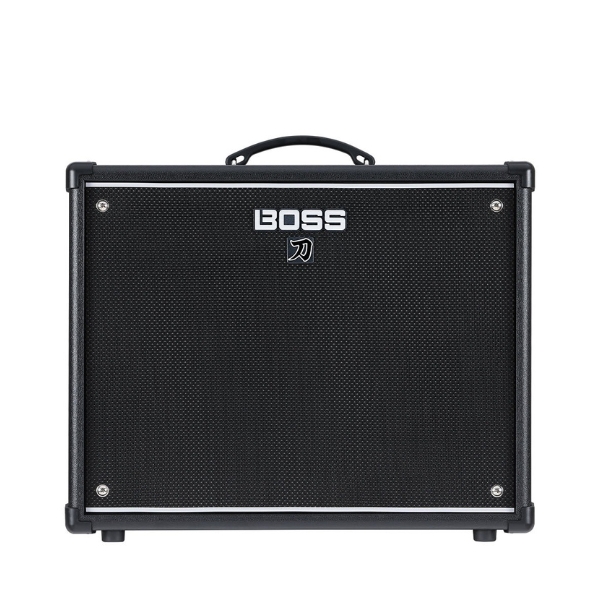
All things considered, the Boss Katana 50 Gen 3 is hard to beat. It sounds fantastic, with authentic amp models and studio-grade effects, it’s easy to dial in, and it won’t break the bank, making it my top pick.
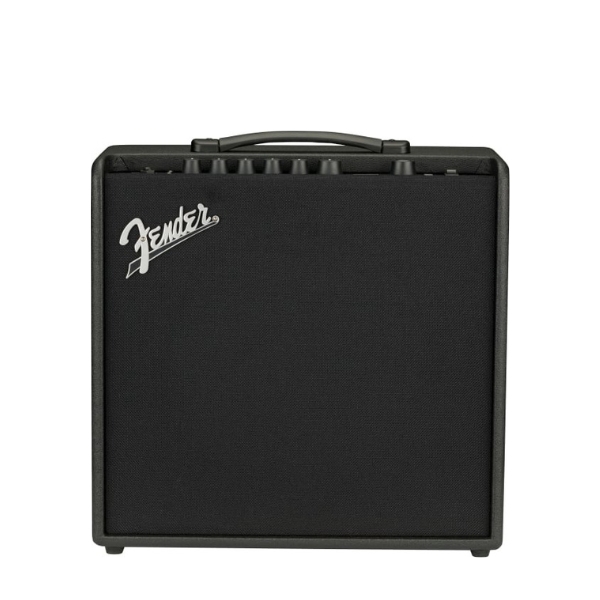
If you're looking for great modeled guitar tones on a budget, the Fender Mustang LT25 is my favorite option. It delivers a superb suite of modeled amps and effects, all for relatively little money.
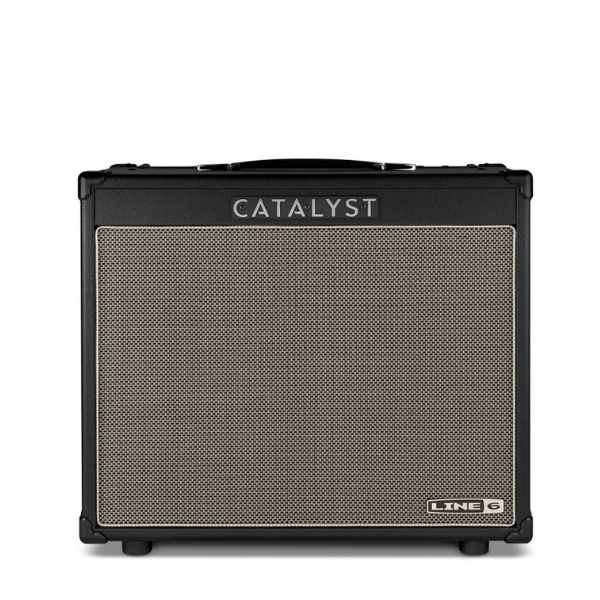
If you're looking for the pure power of a gigging amp, the Line 6 Catalyst CX 100 delivers 100 watts of power with a 12-inch speaker. Ideal for turning up to your local venue, it's also loaded with high-quality HX effects.
Best overall
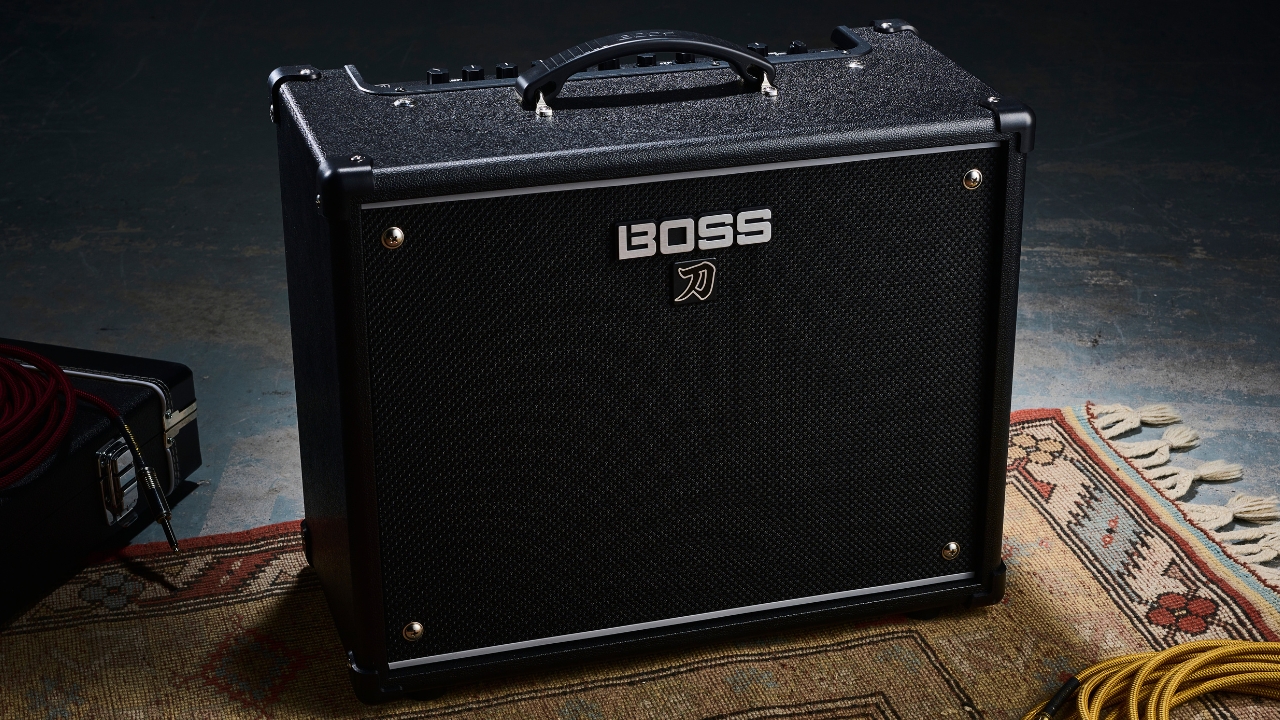
1. Boss Katana 50 Gen 3
Our expert review:
Specifications
Reasons to buy
Reasons to avoid
✅ Buy if you want the best all-rounder modeling amp: With plenty of power, a huge array of effects, and top-quality amp models, there's a reason the Boss Katana is one of the best-selling modeling amps of all time.
❌ Avoid if you're short on space: This isn't the smallest amp out there, so will take up a bit more room than some of the others on this list.
Overview: In recent years, the Boss Katana has proven itself to be one of the most popular non-tube amps on the market. The MkII Katana wasn’t broken but Boss have seen fit to give it an evolutionary upgrade to make it even better.
Usability: What many players love about this guitar amp is how easy it is to use – all the controls are right there in front of you and, to be honest, it’s hard to dial in a bad sound! There is a 100 Watt model if you're looking to gig with your amp, but for most players, the 50 Watt version should cover the vast majority of needs.
Sounds: The Boss Katana Gen 3 now offers guitarists six different flavors of amp style with two variations on each – so, 12 in total. These cover everything from mellow and sparkly cleans, through classic rock crunch, all the way up to metal-style saturation. The Katana also provides a range of Boss' highly rated effects, with 60 different stompboxes available via the Tone Studio app.
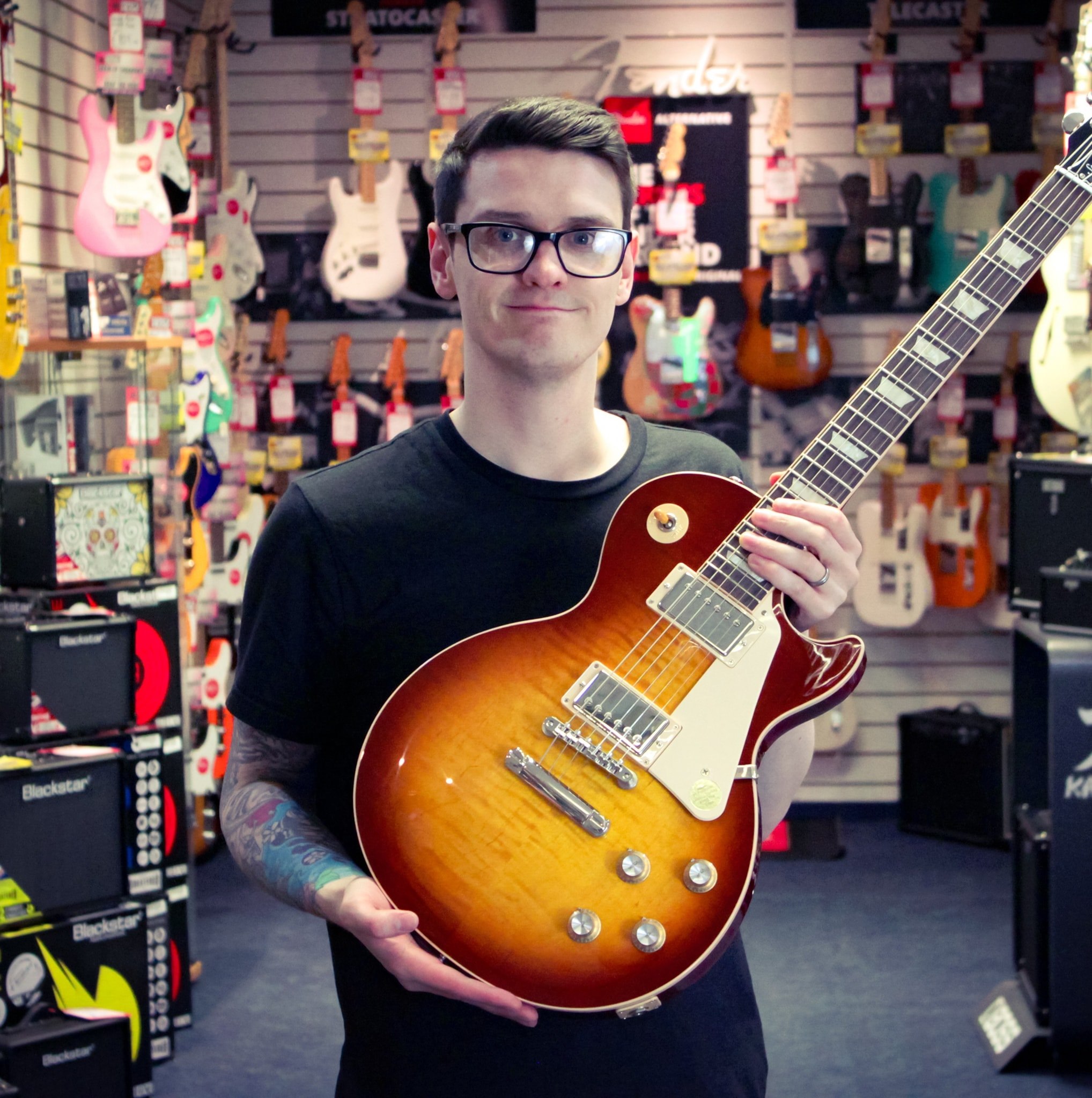
"While I was a fan of the previous iterations, it’s immediately obvious that Boss has gone to great lengths to improve the overall sound quality of the Katana MKIII, resulting in an amplifier that sounds more alive with sweetened highs, richer harmonics in the mid-range, and a tighter, more defined low-end."
Read more: Boss Katana 50 Gen 3
Best budget
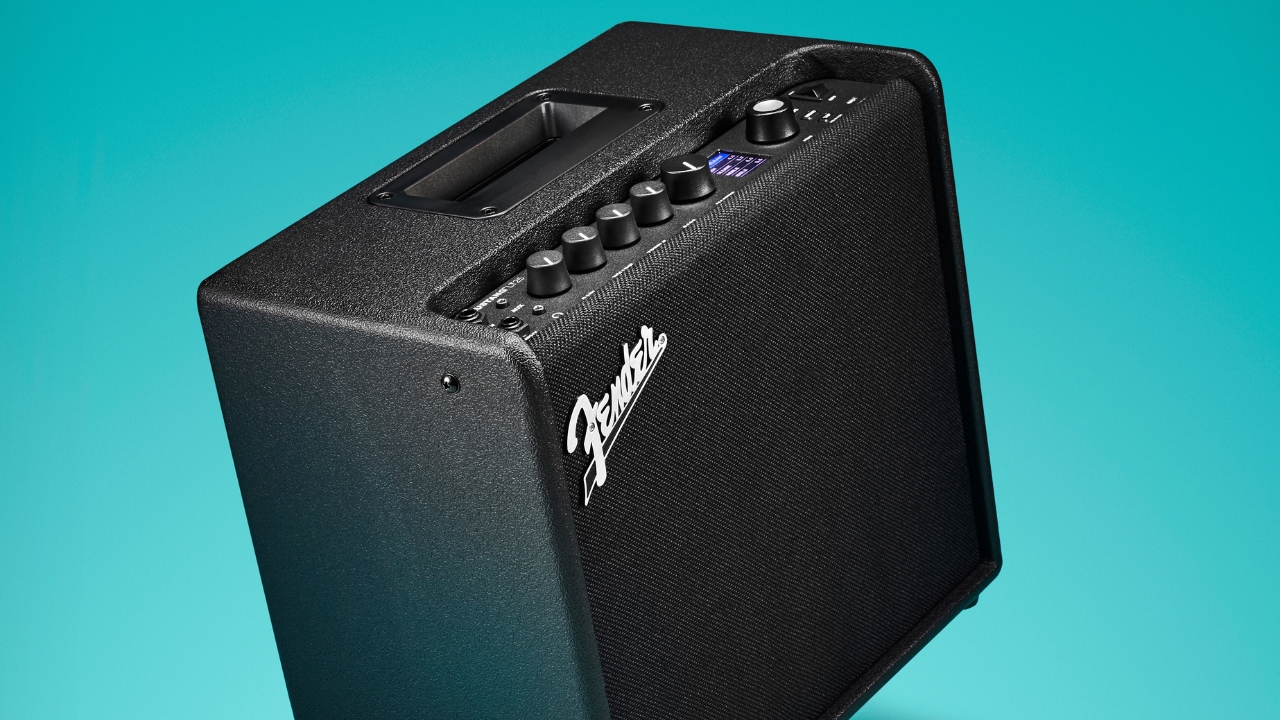
Specifications
Reasons to buy
Reasons to avoid
✅ Buy if you want value-for-money: Costing below the $200 mark, the Fender Mustang LT25 delivers plenty of bang for your hard-earned bucks with a huge array of amp and effects models.
❌ Avoid if you like low-end: With an 8-inch speaker, the LT25 is naturally a little limited when it comes to the reproduction of bass frequencies.
Overview: Throughout its decades of building amps, Fender has learned a few things – and the Mustang LT25 puts a lot of that expertise into one relatively compact yet punchy amp. The Fender Mustang LT25 is a great modeling amp, particularly for beginners – though it will suit a broad range of guitar players.
Usability: Straight out of the box, you can scroll through some really well-designed presets that cover all styles of music. A quick adjustment with the control knobs will enable you to customize the preset you’re on. Like many modern modeling amps, you can also hook the amp up to your Mac or PC to delve even deeper into your tone settings.
Sounds: All of the classic Fender amps are present and accounted for which makes it great if you're a fan of the brand. Amps like the Twin Reverb, Deluxe Reverb, Bassman, and many others are all featured here and are very accurately modeled. It gives you a great selection of sounds to work with, but it's not just a one-trick pony.
There are also some great higher gain models like the EVH amps, and classics Marshall and Orange emulations. The suite of effects is phenomenal too, delivering a raft of excellent quality delays, reverbs, and modulation sounds that allow you to cover pretty much any style.

"Call me a luddite, but I think the Mustang LT25 is pitching itself perfectly. I enjoyed the un-fussy simplicity and interesting sounds, and most importantly, it made me want to keep playing! This part of the market features some strong competition, but the ‘Stang has proved itself once more."
Read more: Fender Mustang LT25 review
Best for gigging
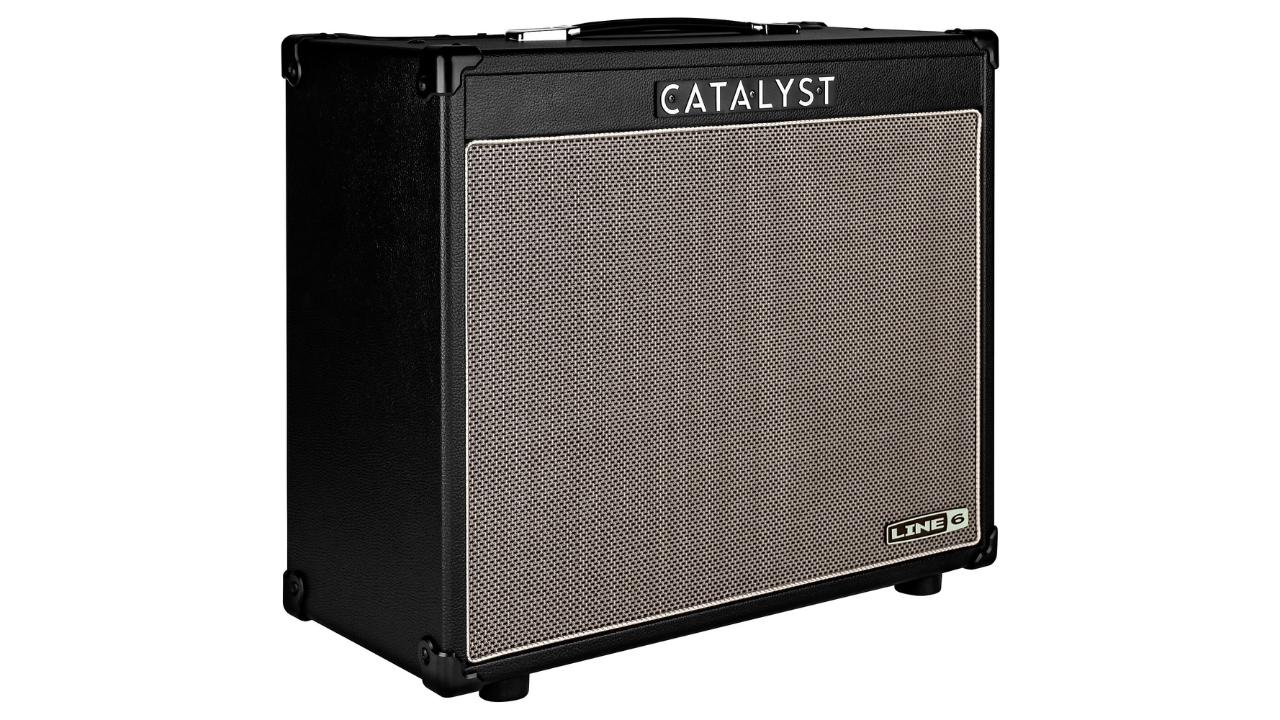
Specifications
Reasons to buy
Reasons to avoid
✅ Buy if you want enough power to gig: Delivering 100 watts of power, the Catalyst CX100 has plenty of power on tap for playing gigs, and will keep up with a heavy-handed drummer.
❌ Avoid if you want to use Bluetooth: If you like to tweak your tones via a phone app then you'll want to look elsewhere as the Bluetooth connectivity doesn't allow you to do this.
Overview: Line 6 is one of the OGs of guitar amp modeling, and its Helix lineup of floor-based units remains class-leading. The Catalyst CX 100 brings the company’s latest and greatest amp models to a 100-watt 1x12 combo.
Usability: In a similar vein to the Boss Katana there are a lot of physical controls on the Catalyst CX100 which makes it great if you like to get hands-on without resorting to using a laptop or app on your phone. It's super simple to dial in tones, and with 12 preset options you've got plenty of choice for gigging.
Sounds: The 12 onboard amp voices cover everything from classic cleans to boutique crunch and modern high-gain tones, while there are 24 Helix-derived effects spanning reverb, delay, modulation, and pitch effects. You also get an onboard boost, plus USB, XLR, and MIDI connectivity for recording and live performance.
Crucially, the Catalyst CX delivers tonally, with an authentic tube-like dynamic response at any volume, while the XLR output ensures crystal-clear speaker-emulated tones for easy recording and PA use. With a wealth of features, easy operation, and a keen price tag, it’s a no-brainer for gigging guitarists.

"While Line 6’s Catalyst is familiar and straightforward to operate, there’s just enough under the hood to satisfy those who like to tweak things. Consequently, it’s great fun to use, despite a few relatively minor niggles, which could easily be corrected via future firmware upgrades. "
Read more: Line 6 Catalyst 100 review
Best practice
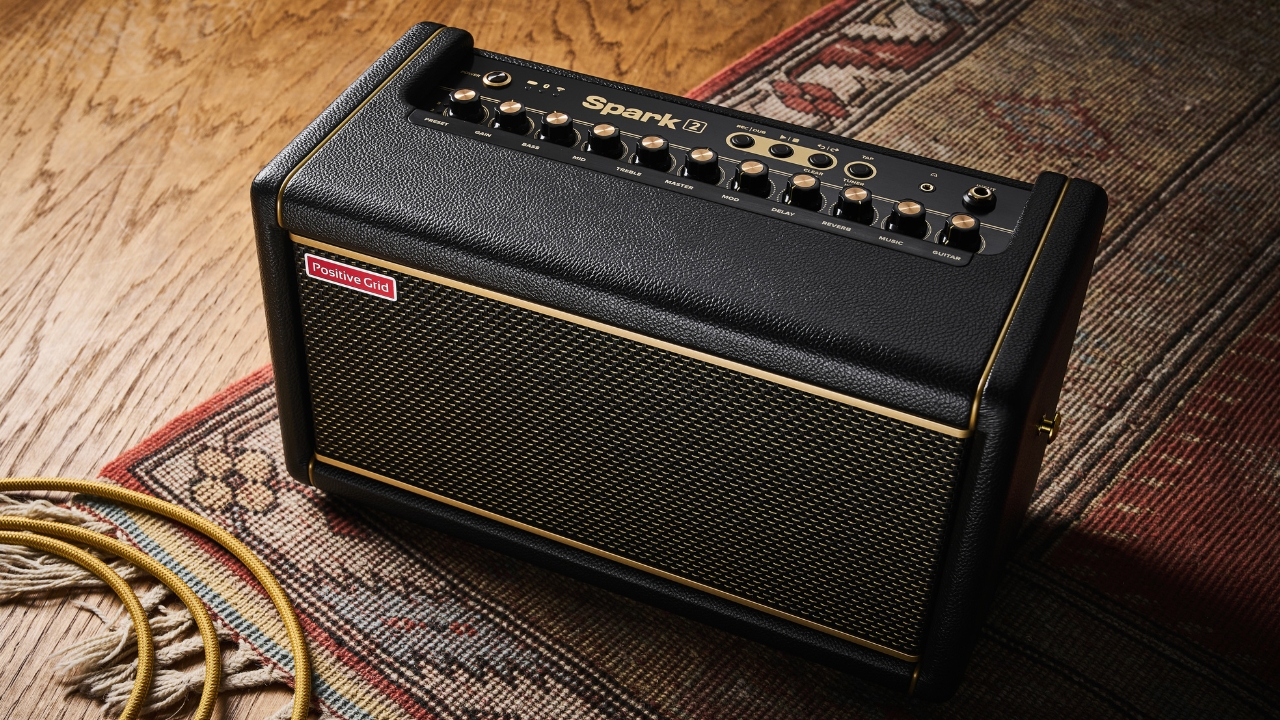
Specifications
Reasons to buy
Reasons to avoid
✅ Buy if you want a compact practice solution: If you want modeled amp tones that don't take up too much space, the Spark 2 is small enough to fit on a desktop or reasonably sized shelving unit.
❌ Avoid if you don't like using a smartphone: This amp relies on its smartphone app to get the most out of it, so look elsewhere if you prefer a more physical interaction with your amp.
Overview: With the release of the Spark 2, Positive Grid has taken arguably one of the most popular practice amps of all time and improved on it massively. It's more evolution than revolution like it's predecessor of course, but for my money it's better in pretty much every way.
Usability: It's finally got the most requested feature in the form of a looper. It comes in two modes, a groove looper that's based on a set tempo, and a traditional free looper where you dictate the tempo changes. Using the latter is pretty much impossible without the addition of a footswitch, but the groove looper works surprisingly well with just you and your smartphone.
Sounds: The sound has seen a huge improvement too, with the power rating upping from 40 to 50 watts, and newly designed speakers that are angled slightly outwards. It delivers a far more three-dimensional tone than the Spark 40, especially noticeable when using stereo delays and reverbs.
Overall it sounds simply incredible, and there were many grin-inducing moments for me during my testing where I found it hard to believe it wasn't a 'proper' amplifier. If you're practicing at home and want the best tones in a relatively compact package, the Spark 2 is the best choice.

"The original Spark is the definition of a modern classic amplifier, and Spark 2 is the perfect sequel. Adding more of everything in the best possible way, Positive Grid has knocked it out of the park when it comes to the latest iteration of their Spark amp. It is more evolution than revolution, but they’ve delivered everything guitarists have been asking for and more. It’s simply superb."
Read more: Positive Grid Spark 2 review
Best for recording

Specifications
Reasons to buy
Reasons to avoid
✅ Buy if you want the ultimate recording amp: The original is arguably the most recorded amp of all time, and with this Tone Master version you can have those same iconic tones without the ear-splitting volume.
❌ Avoid if you want versatility: The schtick of the Tone Master amps is a single great sound, so look elsewhere if you want a variety of amp and effects models.
Overview: Whilst the Fender Tone Master Deluxe Reverb doesn’t have the same kind of versatility as others on this list, what it does do, it does incredibly well. So much so that it’s hard not to view it as one of the best modeling amps out there.
Usability: The Fender Tone Master Deluxe Reverb is the most expensive amp on this list, but it’s still cheaper than the all-tube version. It’s also nearly half the weight. In addition, there are modern-day benefits such as a line output with level control, a three-option cab-sim and a six-way power attenuation switch for playing at a variety of volumes.
Sounds: Instead of modeling a bunch of amps, as the name suggests, this models the sound and feel of a Fender Deluxe Reverb combo and, unless you’re comparing them side by side, it’s not easy to tell the difference. It delivers the same chime and sparkle as the original, with a lush, full-bodied tone and incredible dynamics. Even the control panel is identical, so you’ll have the incredible-sounding tremolo and reverb as well.
Read our full Fender Tone Master Deluxe Reverb review

"This amp ably demonstrates how today’s digital technology can reproduce the complexities of a valve amplifier, to the point where smaller differences become increasingly less significant. If you critically compared a well-restored original Twin Reverb in a studio, you may hear a difference, but in a live band mix I’d challenge anyone to identify the Tone Master Twin Reverb from the real deal."
Read more: Fender Tone Master Twin Reverb review
Best head
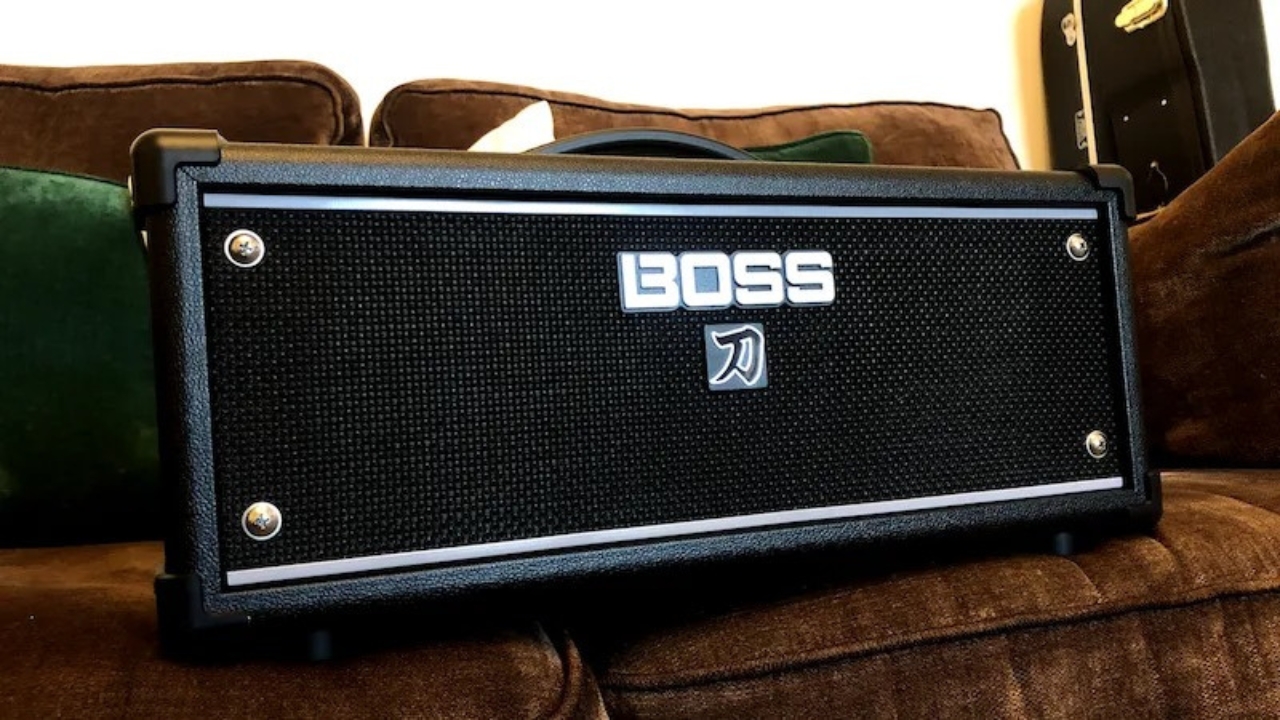
Specifications
Reasons to buy
Reasons to avoid
✅ Buy if you want the best modeling head: Great for gigging or home use, the Katana Head is a great option if you want a versatile modeling amp that can cover a range of roles.
❌ Avoid if you don't own a guitar cabinet: To get the best out of this you'll need a separate guitar cabinet, so if you don't already own one you might be better off with a combo amp.
Overview: The Boss Katana Head Gen 3 builds on the legacy of one of the most popular amp series out there. This 100-watt head packs six amp voicings, each with a boosted variation, covering everything from lush cleans to searing high gain and plenty in between.
Usability: With USB recording, MIDI support and stereo expand mode, this amp head is as comfortable in the studio as it is on stage. Whether you are gigging, recording or practicing at home, the Katana Head Gen 3 delivers a serious tone without breaking the bank in a truly versatile package.
Sounds: Thanks to Boss’s Tube Logic tech, the Katana doesn’t just sound great – it feels great, reacting to your playing like a tube amp would. Five onboard effects categories mean you can ditch the pedalboard, and with deep editing via Boss Tone Studio, you can tweak your tone to perfection. For practicing at home, the built-in 5" speaker has you covered, while the power control lets you crank the amp without shaking the walls.
Read the full Boss Katana Head Gen 3 review

"The Boss Katana Head Gen 3 is a masterclass in versatility, seamlessly bridging the gap between practice and performance. Its internal 5-inch speaker is ideal for home use, while the ability to connect to a cabinet unleashes arena-filling power. The amp offers a rich array of tones and iconic Boss effects, enhanced by the user-friendly Tone Studio, now compatible with smartphones."
Read more: Boss Katana Head Gen 3 review
Spec comparison
If you're struggling to decide which amp in this guide is right for you, I've collated the key specs in order to give you an easy to read, side-by-side comparison.
Model | Amps | Effects | Power | Speaker |
|---|---|---|---|---|
Boss Katana 50 Gen 3 | 12 | 60 | 50W | 1x12" |
Fender Mustang LT50 | 20 | 25 | 50W | 1x12" |
Line 6 Catalyst CX 100 | 12 | 24 | 100W | 1x12" |
Positive Grid Spark 2 | 33 | 43 | 50W | 2x4" |
Fender Tone Master Deluxe Reverb | 1 | 2 | 100W | 1x12" |
Boss Katana Head Gen 3 | 12 | 15 | 100W | 1x15" |
Also consider
For me, the six amps above are the ones you should be looking to spend your hard earned cash on. That said, I appreciate they might not suit every player's needs, so here are some more modeling amps for your consideration.
Blackstar Silverline Special
12 amps | 12 effects | 50W | 1x12"
As with most other modeling amps, you’ll have a range of amps to use as your base tone: two cleans, two crunch and two overdrives (with the latter, you can really crank the gain to get some great metal sounds). There’s also a high-quality effects section, as well as Blackstar’s patented ISF control – this essentially lets you dial and blend in a British, or American, sort of sound.
★★★★½
Yamaha THR10II Wireless
8 amps | 8 effects | 20W | 2x3.1"
The Yamaha THR10II Wireless might be the ultimate solution for players who want a neat and tidy desktop amp. Unlike most other guitar amps, it doesn’t look out of place on a work desk or in a living room, meaning you could feasibly plug it in and play while having a five-minute break from work. Not only is the THR10II Wireless compact, it’s also got a wireless receiver built in, so you could use a Line 6 Relay transmitter alongside it for cable-free operation.
★★★★½
Vox Cambridge 50
11 amps | 8 effects | 50W | 1x12"
Like many others on this list, the Vox Cambridge 50 delivers the whole spectrum of amp styles – from cleans, through crunches, to high-gain tones. This amp has many strong points, but it does a particularly great job of nailing that classic Vox AC chime. You can also get some incredible ‘on the edge of breakup’ tones, which you can push even further by digging in with your picking hand, or with an external pedal.
★★★★☆
Read more: Vox Cambridge 50 review
How to choose
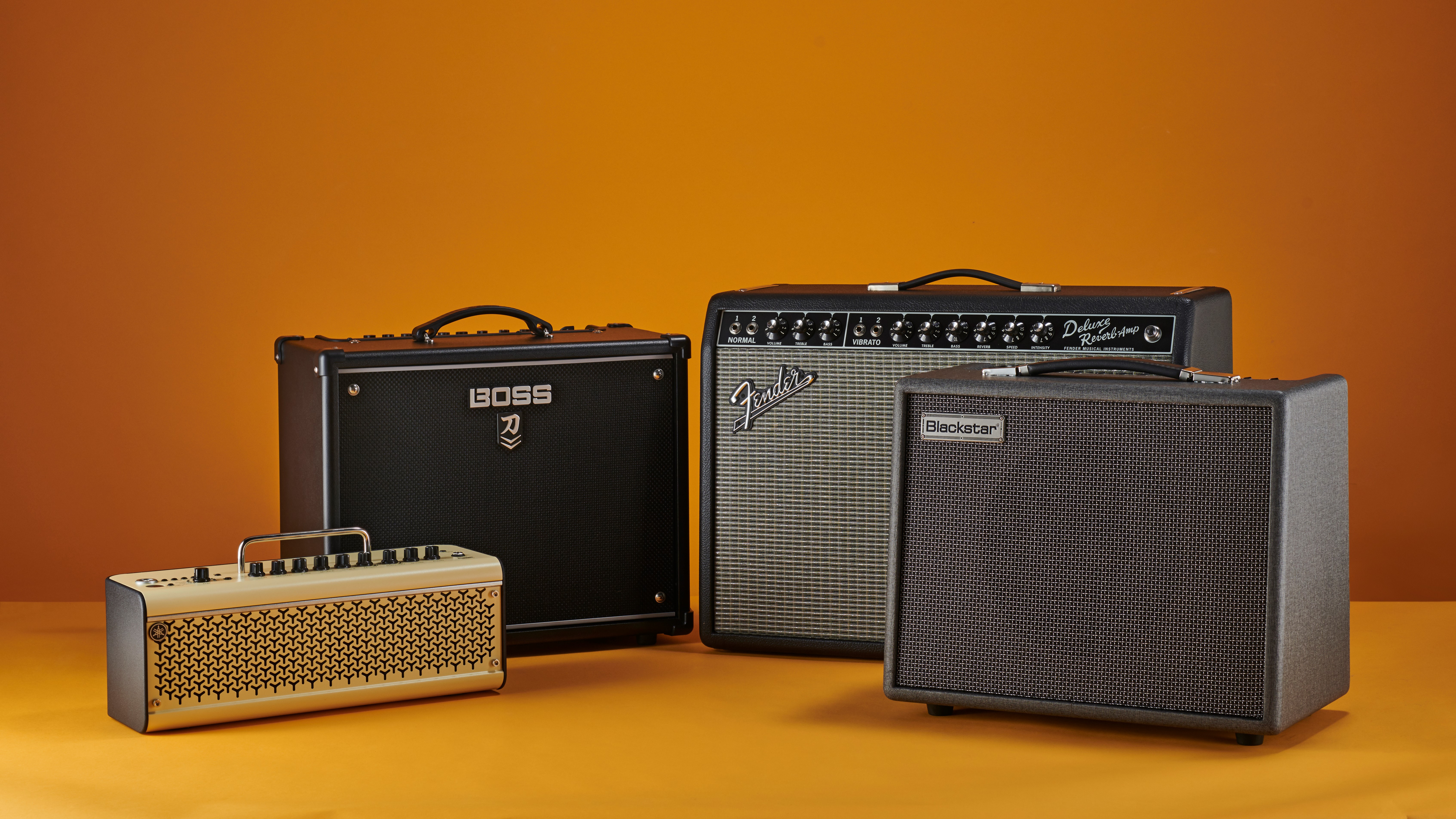
So, we’ve given our take on what the best modeling amps are, but why would you choose one of these over a traditional solid-state amp or a tube amp? Well, many modeling amps feature sounds based on a whole array of tube amps. Why have one tube amp when you could have the sound of many in a modeling amp? They give you more versatility, and more tonal options.
Now, most modeling amps on this list don’t quite sound the same – or, indeed, react in the same way – as tube amps, but they’re very close. Technology has improved so much over the last decade that modeling amps now sound closer than ever to the real thing.
Such is the way that tube and solid-state amps create sound, they tend to be more limited in the types of tones they can create. Modeling amps, on the other hand, can create a vast array of sounds – some even have hundreds of options.
Modeling amp vs amp modeler: What's the difference?
You can trust Guitar World
Although modeling amps and amp modelers technically do the same things - and make your guitar tone sound epic in the process - we feel like there's one main difference you should take into consideration when looking to buy a new amp.
A modeling amp is an amp which has a variety of different tones within it. Amps such as the Boss Katana and Yamaha THR series come under this category, and while they can recreate a load of different sounds, they don't necessarily recreate the tones of loads of different amps.
Units such as the Line 6 Helix or Neural DSP Quad Cortex come under the 'amp modeler' category, as they're designed to recreate and replicate the sound of any amp under the sun. They don't really have a core tone, and usually contain more digital architecture than the Katana or THR amps - which are designed around a more 'traditional' amp chassis.
What style do you play?
When shopping for the best modeling amp, there are some things you should think about before handing over your cash. Firstly, think about what sort of music you play. If it’s a really eclectic mix, then you’ll want something that can cover a lot of ground. The more options, the better, so keep an eye on the number of amps/cabs, as well as what your options are with EQ.
How many effects do you need?
A number of modeling amps also have effects built in, including phasers, flangers, delays, reverbs, octaves, overdrives and boosts. If this is something you’d be interested in exploring, then look for an amp with a decent effects section. However, if you’re more of a bread-and-butter kind of player, you might not need such malarkey.
Some of the best modeling amps have presets built in, too, and others are more traditional in their layout. Preset sounds can be really fun to play with, and really inspiring. They can present you with combinations of amp styles and effects that you might never have put together.
What is the right size and power for you?
Size and power are worth considering, too. Your desktop amp with 3.5” speakers might work great for your workspace at home, but it’s not going to cut it on stage. If you’re buying an amp with the aim of playing alongside a band, then ideally you’ll want something with a 10” speaker or bigger, and you’ll want to be looking at a minimum of around 50W. If your budget allows for a higher wattage, then you’ll have more volume on tap should you need it at a rehearsal or gig.
What other features should you consider?
Many of the best modeling amps come fitted with an array of features to help make life as a guitarist that bit easier. Line outputs with cabinet simulation allow you to plug directly into a PA system or recording setup with the addition of what an actual speaker would bring to the sound. Most will have a headphone output for silent practice, and some might also have a USB output that can be used to update the amp’s firmware or record directly onto your computer. Think about what features you’d like, and look for an amp that has them all.
Find out more about how we make our recommendations and how we test each of the products in our buyer's guides.
FAQs

What is a modeling amp?
To put simply, a modeling amp is a guitar amplifier that uses digital signal processing to recreate the sound of a traditional guitar amplifier. Typically it's used to replicate the sound of a tube amp without the ear-splitting volume or back-breaking weight. Modeling amps have become incredibly popular over the last ten years, with the vast majority of guitarists owning at least one.
Are modeling amps any good?
Yes they are. So good in fact, that I highly doubt most guitarists could tell the difference in a blind test - despite what they might proclaim on the internet. The ability of modeling amps to impersonate many different tube amps alongside the ability to incorporate effects has completely changed the guitar amp game, with the majority of sales now coming from modeling amps instead of more traditional tube amps.
Can you gig with a modeling amp?
Yes you can gig with a modeling amp. I've seen many guitarists on the gigging circuit using modelers, and that runs all the way up to the professional level. The convenience of modeling makes it great for touring artists, and the ready availability of PA systems and microphones in smaller venues means it's more than viable for non-professionals to use modeling amps for gigs too.
What is a profiling amp?
A profiler is slightly different from a modeling amp. Where a modeling amp uses DSP (Digital Signal Processing) to imitate the sound of a tube amplifier, a profiler instead takes a snapshot of an actual amplifier and recreates it that way. You can profile an amp by playing a signal throughout that captures its tonal response, allowing you to get the same sound. There is a small negative here however, as a profiled amp won't react the same to changes in EQ or gain and volume levels in the same way a modeled amp will.
Key terms
Unsure on what some the lingo in this guide means or need to brush up on your modeling amp knowledge? In this section I've cultivated all the technical terms you're most likely to encounter when dealing with modeling amps and explained each in a way that's easy to understand.
- Amp modeling - A digital technology that replicates the sound characteristics and playability of an analog guitar amplifier.
- Cab simulation - A digital way of recreating the sound of a miked guitar cabinet.
- Direct out - A connection used for sending the amp sound to a PA system or audio interface.
- Digital Signal Processing (DSP) - The technology that creates the emulated sounds of guitar amplifiers and effects pedals in modeling amps.
- Dynamic response - How a guitar amplifier reacts to your playing input, for example, your pick attack or changes in your guitar's volume knob.
- Effects loop - A connection that lets you place effects after the preamp section for a cleaner sound. Typically used with delays and reverbs.
- Full Range Flat Response (FRFR) - A type of speaker that aims to honestly reproduce the full range of frequencies without any added 'color'.
- Impulse Response (IR) - A digital snapshot of a miked guitar cabinet designed to make amp sims sound more realistic.
- Latency - A delay in sound processing, typically a result of too many effects being used.
- Power Amp - The section of an amplifier that amplifies the signal before it is sent to the speaker.
- Preamp - The section of an amplifier that shapes the tone of the amp.
How we test

We've tested a shedload of modeling amps here at Guitar World, and I don't think there's a single writer here who doesn't have a modeling amp or two in their collection. Our regular testing and real world experience of modeling amps is what informs our buying guides, so you know that all of our suggestions come from actual experience and not forum hype.
When testing a modeling amp, it'll undergo the exact same process as a tube or solid state amp, starting off with assessing the build quality. Here, we'll inspect every inch of the amp in detail to ensure that it's well put together. Where possible we'll take the grille off to examine the speaker, as well as remove any backplates to assess the internals of the amplifier.
Next up, we'll test the overall usability of the amplifier. Starting without the manual, we'll look at how easy it is to get the amp up and running with usable tones. We'll try out all the knobs and buttons and do our best to coax great sounds out of them before diving into the manual to look at the advanced features.
With a good overview of the features in mind, we'll then look at the sound of the amp. Here our previous experience with amps becomes very important, as with modeling amps we'll likely be comparing them to the real-world tube amps they're based upon. We're looking for accurate response, rich harmonic saturation, and nothing in the way of digital harshness.
We'll also look at the built-in effects if it has any, comparing to our experience of actual pedals and seeing how they hold up. We want to hear that same richness and have that same flexibility you get with actual effects, whether that's dialing them in on the amp itself, or using additional software.
We'll always aim to test over a period of at least two weeks, using them at home, taking them to rehearsal, and even gigging them to be sure they're appropriate for our guides. This intensive testing allows us to get over the honeymoon period of getting a new product, testing as any guitarist would.
Read more about our rating system, how we choose the gear we feature, and exactly how we test each product.
Related buying guides
- And the best budget guitar amps under $500
- Here are the best electric guitars
- Or check out the best practice amps
- Ditch analog for the best amp modelers
- Enhance your playing experience with our pick of the best guitar apps
Get The Pick Newsletter
All the latest guitar news, interviews, lessons, reviews, deals and more, direct to your inbox!
After spending a decade in music retail, I’m now a freelance writer for Guitar World, MusicRadar, Guitar Player and Reverb, specialising in electric and acoustic guitars, bass, and almost anything else you can make a tune with. When my head’s not buried in the best of modern and vintage gear, I run a small company helping musicians with songwriting, production and performance, and I play bass in an alt-rock band.
- Michael Astley-BrownEditor-in-Chief, GuitarWorld.com
- Matt McCrackenJunior Deals Writer
- Ross Holder
"I never use my tube amp at home now, because I have a Spark Live": 5 reasons you should be picking up the Positive Grid Spark Live in the massive Guitar Month sale
“Our goal is to stay at the forefront of amplification innovation”: How Seymour Duncan set out to create the ultimate bass amp solution by pushing its PowerStage lineup to greater heights
